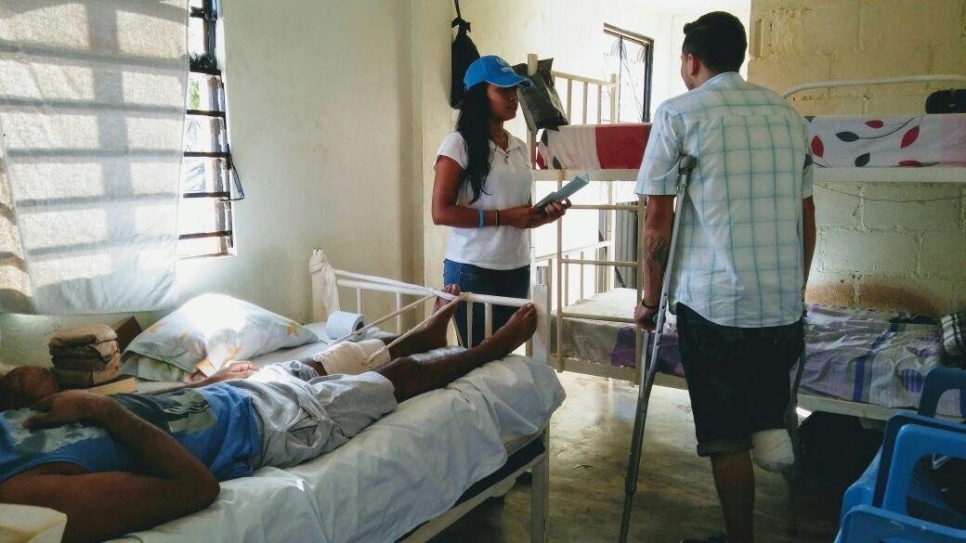
Honduran refugee Armando* talks with staff at a shelter in Mexico. © UNHCR/Yolanda Azucena Mendez Davila
ACAYUCAN, Mexico – A cab driver in his native Honduras, Armando* had to cross a patchwork of street gang territories each working day, fearing for his life.
“Every day it was a challenge to go to work, I did not know if I would return to my house. But I had no other choice – I needed money to live and support my sister and my mother, with whom I lived,” says Armando.
The dangers he faced are all too real in the Central American nation, where working as a taxi driver has become one of the most perilous occupations.
Violence Observatory of the Autonomous University of Honduras. Cab drivers like Armando accounted for 667, or nearly half, of the victims.
Members of gangs, known locally as maras, typically demand so-called ‘war tax’ payments from bus and taxi drivers, threatening to kill those that fail to pay up.
Unable to make the ever-escalating extortion demands, Armando skipped a scheduled meeting with the gang and fled on foot and by bus to neighbouring Guatemala.
After crossing the border into Mexico, he clambered on to a freight train, better known as “la bestia,” of “the beast,” to make his way north – unaware that he was once again in mortal danger. Criminals preying on the riders tossed Armando under the wheels of the moving train, severing his right leg.
Medics operated on him in a hospital in the State of Mexico. While recovering in a shelter, he completed an application for asylum with the Mexican Commission for Refugee Aid – one of a growing number from the north of Central America to do so.
Since 2011, more than 350,000 residents of Honduras, Guatemala and El Salvador have filed asylum claims after fleeing escalating violence at home. Last year alone, nearly 130,500 asylum claims were registered, according to government figures.
The vast majority seek asylum in Mexico, Costa Rica, Nicaragua, Panama, Belize, and the United States. However, the needs in the region remain overwhelming. In 2018, UNHCR, the UN Refugee Agency, is seeking US$36.2 million to provide protection and assistance to people like Armando, but only 12 per cent of the funding has so far been received.
“I thank UNHCR and the shelter that supported me.”
With the care that he has received at the shelter, Armando is recovering. He has received recognition of his refugee status from the Mexico government and has found work for the local Catholic Church parish, where he is in charge of updating records, including baptism, marriages, communions and other ceremonies. He is also awaiting a prosthesis thanks to a program of the International Committee of the Red Cross.
“When I arrived I felt like I was trapped in a country that was not mine, but I thank UNHCR and the shelter that supported me all the time in my asylum process,” says Armando, is applying for residency in Mexico, where he dreams of becoming a music producer or language teacher.
*Name changed for protection reasons
For more information on how you can help refugees in the north of Central America, please visit unhcrca.wpengine.com/childrenrun
